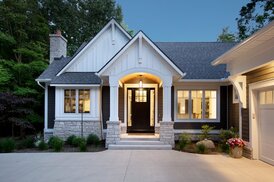Selecting the products necessary for a high-end remodel can be overwhelming for clients. Many have busy schedules and have difficulty finding time for buying trips. So remodeler Bruce Curtis, president of Washtenaw Woodwrights, in Ann Arbor, Mich., uses a combination of practices to ensure a smooth flow from start to finish. “Keeping [clients] on track gives us the opportunity to earn our margin, write a good schedule, and run a tight project. We minimize risk, which is really what it is all about,” he says.

Curtis employs a two-stage design process. During the first stage his team uses a combination of design and estimating to finalize a floor plan. They outline the selections in generic terms, such as “cherry cabinets” or “granite.” At the end of this stage, they can provide the client with an estimated budget and conceptual plan. If the client is ready to move to the next stage, they are asked to sign an agreement.
At stage two, Curtis’ team buckles down on selections and pricing, aiming to finalize selections before construction begins. Though not always possible, it helps to have set this as a defined goal.
Washtenaw Woodwrights’ design staff create a spreadsheet of selections based on the project document. “These decisions have to be made — if you don’t do it during design, it falls in the hands of those building the job and it takes them three times longer than if your designer had helped make the decision,” Curtis says. “We’re trying to avoid negotiating the cost of cabinet pulls in the middle of the job or finding out that those cabinet pulls will take three weeks to order.”
Two important factors in helping clients choose products are the design staff and the showroom. The company has had a showroom with kitchen and bath vignettes and samples of cabinet doors, countertops, tile, flooring, and cabinet pulls for more than four years.

Curtis estimates that clients make 80% of their selections in the showroom, usually within a few design sessions. They can also peruse additional products in the showroom’s catalogs. If they want to see those products before making a decision, designers can order samples, which usually arrive in a couple of days. “[Clients] want to be guided, but not be taken advantage of,” Curtis says. “They want to be confident that you are giving them good advice.”
The clients usually visit outside showrooms for granite, plumbing, and appliances, and can ask the remodeling company’s designers to accompany them. “If [clients] are out there on their own,” Curtis says, “they may get confused and misinformed and have a hard time processing the information they are given.”
He says that because the company charges a fixed design fee, clients are not worried about having to pay an hourly charge for the designer’s time. “They are more willing to have us go with them, and the team makes better decisions,” Curtis says.




